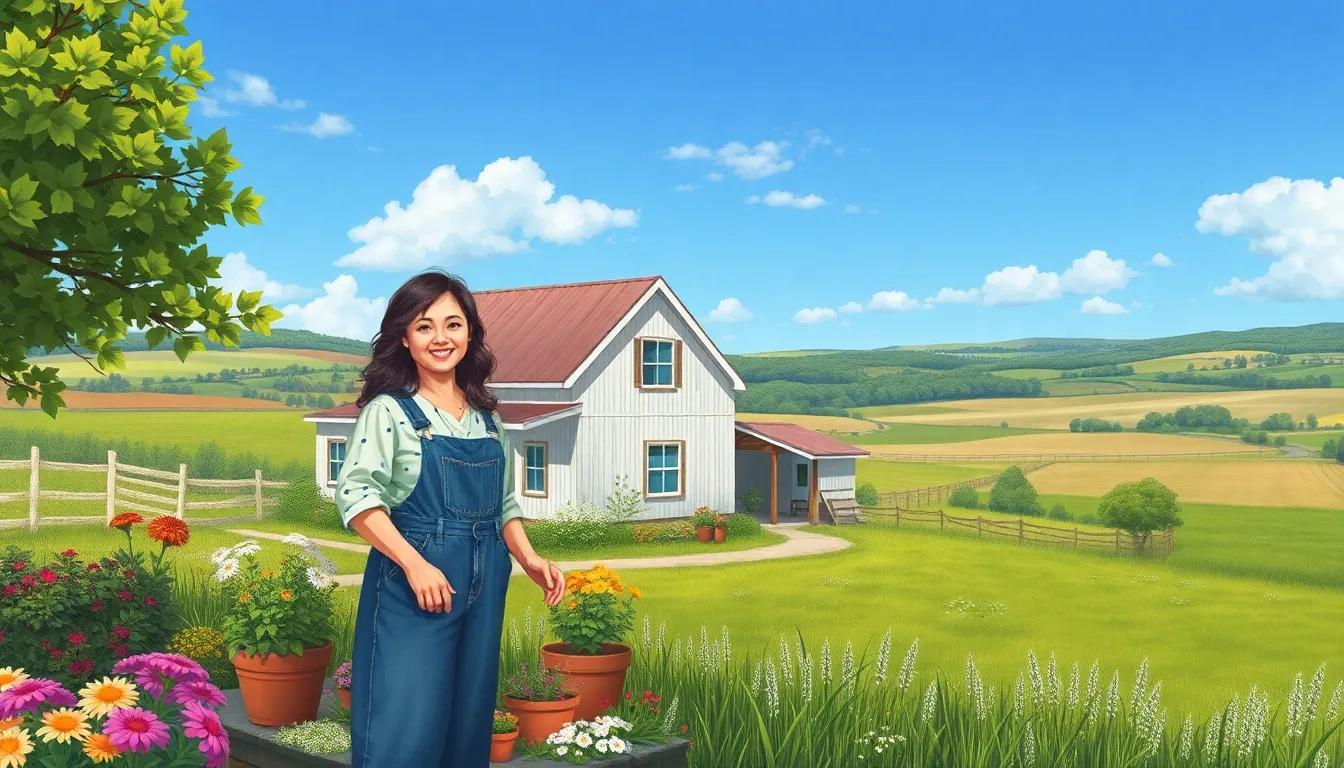Imagine waking up to the sound of chirping birds instead of honking horns. A rural home offers that blissful escape from the chaos of city life, where the air is fresher, and the neighbors are friendlier—unless they’re cows, of course. With rolling hills and wide-open spaces, it’s the perfect backdrop for a life filled with peace, tranquility, and maybe a little bit of mud on your boots.
Rural living isn’t just about the scenery; it’s a lifestyle choice that comes with its own unique charm. From charming farmhouses to cozy cabins, these homes invite you to slow down and savor the little moments. Whether it’s growing your own vegetables or sipping coffee on the porch while watching the sunset, a rural home can transform everyday life into an adventure worth living. So grab your overalls, and let’s explore why trading city lights for starry nights might just be the best decision ever.
Table of Contents
ToggleWhat Is a Rural Home?
A rural home typically refers to a residence located in the countryside, often surrounded by nature. These homes can include various styles, such as charming farmhouses, cozy cabins, or bungalows that embrace the simplicity of rural life. Living in a rural home provides easy access to fresh air, open spaces, and scenic landscapes.
Many people find the appeal of rural homes lies in their ability to offer a sense of community. Friendly neighbors often become like family, creating strong social bonds that enhance the living experience. Individuals residing in rural areas enjoy a slower pace of life, which allows for meaningful interactions and connections.
Gardening is a common activity among rural homeowners, with fertile land providing the ideal environment for growing flowers, fruits, and vegetables. Outdoor spaces often become extensions of the home, featuring porches, gardens, and places for relaxation. Families frequently gather outdoors, enjoying the tranquility of nature while making lasting memories.
A rural home may also come with additional features that distinguish it from urban living. Larger plots of land create opportunities for various hobbies, such as farming, raising animals, or engaging in outdoor sports. Privacy levels tend to be higher in rural settings, allowing residents to enjoy their personal space without the noise and distractions typical of city life.
Overall, rural homes embody the essence of a tranquil lifestyle, blending comfort and connection to nature. They invite individuals and families to embrace a fulfilling way of living away from the hustle and bustle of urban environments.
Benefits of Living in a Rural Home

Living in a rural home offers multiple advantages that enhance quality of life.
Peace and Quiet
Rural areas provide tranquility that urban environments can’t match. Fewer cars and less noise contribute to peaceful surroundings. Residents often find solace in the sounds of nature, such as birds chirping and leaves rustling. Living away from bustling city life allows for deeper relaxation, ensuring that stress levels decrease. These calming environments encourage mindfulness and reflection, promoting mental well-being. People can enjoy evenings with clear skies and starlit views, enhancing the overall living experience.
Natural Scenery
Natural beauty surrounds rural homes, creating picturesque landscapes. Rolling hills, lush forests, and open fields characterize the charm of the countryside. Homes often feature expansive views that attract nature lovers, inspiring outdoor activities like hiking and birdwatching. Fresh air and unobstructed views of sunrises and sunsets elevate daily life. Gardens flourish, providing both beauty and fresh produce. The simplicity of nature fosters a deep appreciation for the environment.
Community and Lifestyle
Community bonds thrive in rural settings. Neighborly relationships develop easily among residents, creating a supportive network. Local events and gatherings play a significant role in fostering connections. Many engage in shared activities, such as farmers’ markets or community fairs, strengthening ties. A slower lifestyle encourages residents to savor daily moments, cultivating joy in life’s small pleasures. Families can collaborate on projects, tapping into shared interests and resources. Rural living emphasizes quality relationships and enhances overall life satisfaction.
Challenges of Rural Home Living
Rural living presents unique challenges despite its many benefits. Limited access to essential services often creates significant hurdles for residents.
Limited Access to Services
Residents frequently experience limited access to healthcare facilities, grocery stores, and educational institutions. Many small towns lack extensive medical services, requiring long drives to reach adequate healthcare. Grocery options also tend to be fewer, with residents dependent on small markets or must travel considerable distances for larger supermarkets. Educational institutions may be less diverse, impacting the availability of specialized programs. Public transportation options are typically minimal, which complicates access to services for those without personal vehicles. This situation can lead to a reliance on technology for telehealth and online shopping, providing some alternatives to in-person access.
Transportation Issues
Transportation challenges significantly affect rural residents. Roads in rural areas may be poorly maintained, leading to difficult travel conditions, especially during adverse weather. While owning a personal vehicle is essential, not all residents can afford one, making mobility an issue for some families. Public transport options remain limited, leaving individuals with few alternatives for commuting or accessing services. Long distances to workplaces can further exacerbate transportation problems, leading to longer commute times and increased transportation costs. Consequently, reliable transportation is crucial for ensuring a functional rural lifestyle.
Tips for Buying a Rural Home
Finding the perfect rural home requires careful planning and consideration. Buyers must focus on key factors that will enhance their living experience in a countryside setting.
Location Considerations
Location plays a crucial role in the rural home buying process. Assessing proximity to essential services like healthcare and grocery stores is vital. Many buyers expect easy access to recreational activities and scenic views. Researching local community events often reveals the vibrancy of surrounding areas. Transportation options should also be evaluated since distances can be significant. Favorable locations often feature well-maintained roads and nearby amenities, making rural life more convenient and enjoyable.
Property Type and Size
Choosing the right property type and size significantly impacts enjoyment of rural living. Farmhouses, cottages, and cabins each offer unique characteristics and atmospheres. Buyers should consider land size to accommodate plans for gardening or outdoor activities. Understanding zoning regulations can help avoid issues with property development. A larger plot allows for privacy and leisure, while smaller properties may offer reduced maintenance responsibilities. Each option presents distinct advantages, shaping the rural experience depending on personal needs and preferences.
Rural living offers a unique blend of tranquility and community that many find irresistible. The charm of a rural home lies in its ability to provide a slower pace of life surrounded by nature’s beauty. With opportunities for gardening and outdoor activities, residents can enjoy a fulfilling lifestyle that prioritizes well-being and connection.
While challenges like limited access to services exist, the rewards of rural living often outweigh these concerns. By carefully considering location and property type, individuals can find their perfect rural retreat. Embracing this lifestyle not only enhances daily experiences but also fosters a deeper appreciation for life’s simple joys in a peaceful setting.





